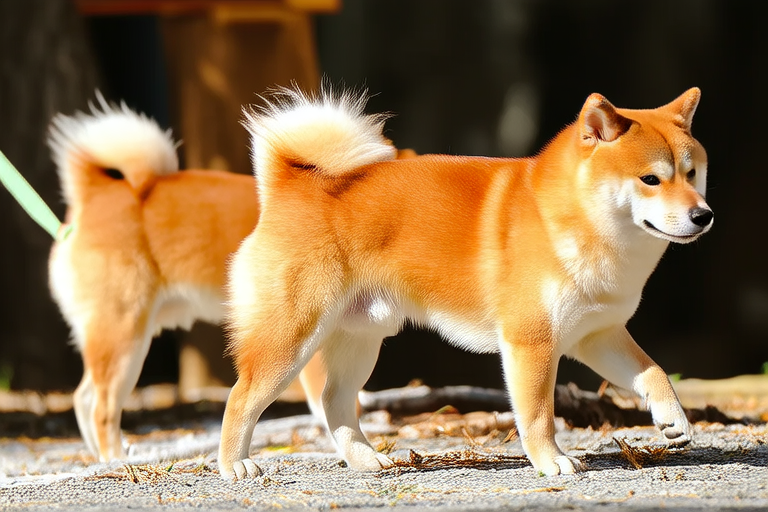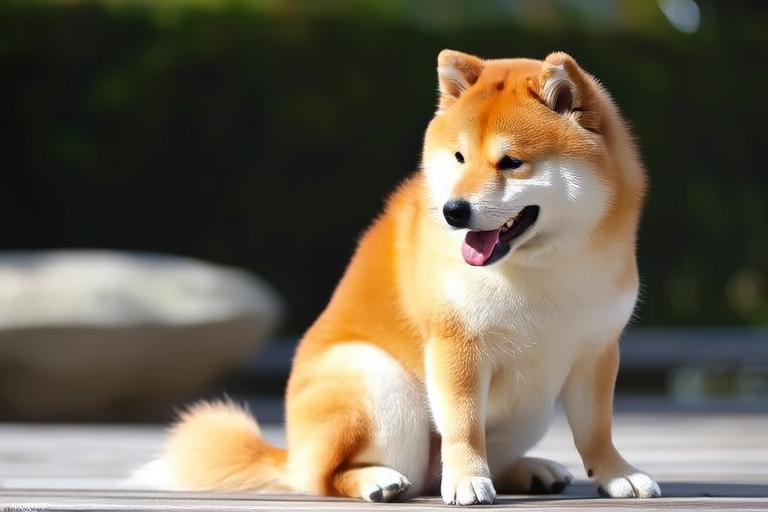
From Wild to Pillow – Transforming Your Shiba Inu’s Behavior in No Time
Welcome to the world of Shiba Inus! Known for their fox-like appearance and spirited nature, these dogs can be a delightful addition to your family. However, they are also notorious for their stubbornness and independent streak. If you’re looking to turn your wild Shiba into a well-behaved companion, this guide will provide you with practical, easy-to-follow tips that will help you transform their behavior in no time.
Understanding the Unique Traits of Shiba Inus
Before diving into the training methods, it’s essential to understand what makes Shiba Inus unique. These dogs are descendants of ancient Japanese hunting dogs, and their lineage has shaped their behavior. Shibas are intelligent, resourceful, and highly alert, making them excellent watchdogs. However, their strong-willed nature can sometimes lead to challenging behaviors.
- Independence: Shibas tend to think for themselves, which can make them resistant to commands.
- Stubbornness: They may refuse to follow instructions if they don’t see the point or if they prefer to do things their way.
- Alertness: Their keen senses make them quick to react to stimuli, which can lead to overexcitement or nervousness.
Knowing these traits will help you approach training with realistic expectations and tailored strategies.
Positive Reinforcement Training Methods
Positive reinforcement is the most effective method for training Shiba Inus. This approach involves rewarding desired behaviors while ignoring or redirecting unwanted ones. The key to success lies in consistency and timing. Here’s how you can implement this method:
- Choose the Right Treats: Shibas are often picky eaters, so find treats that they genuinely enjoy. Small pieces of chicken, cheese, or specially formulated dog treats work well.
- Timing is Everything: Reward your Shiba immediately after they perform the desired behavior. This helps them associate the reward with the action.
- Use Clear Commands: Shibas respond best to short, clear commands. Avoid using multiple words or phrases that could confuse them.
- Practice Patience: Training takes time, especially when dealing with a stubborn breed. Stay calm and patient during training sessions.
Real-Life Example: Sarah adopted a Shiba puppy named Kuma. Initially, Kuma was unresponsive to basic commands like ‘sit’ and ‘stay.’ Sarah started by using small pieces of chicken as rewards and practiced in short, frequent sessions. Within a few weeks, Kuma learned to sit on command and even stayed still during visitors.
Establishing Routines
Shibas thrive on structure and predictability. Establishing a consistent routine can significantly improve their behavior and reduce anxiety. Here are some tips for creating a routine:
- Feeding Schedule: Feed your Shiba at the same times each day. This helps regulate their energy levels and reduces begging behavior.
- Exercise Routine: Shibas require daily exercise to burn off excess energy. A combination of walks, playtime, and mental stimulation is ideal.
- Sleep Schedule: Consistent sleep patterns ensure your Shiba feels secure and rested. Create a quiet, comfortable sleeping area for them.
- Training Sessions: Incorporate short, regular training sessions into your daily routine. This reinforces good behavior and strengthens the bond between you and your Shiba.
Real-Life Example: John noticed his Shiba, Hana, became more relaxed and obedient after he established a consistent feeding and exercise schedule. Hana now looks forward to her morning walks and evening training sessions.
Socialization Techniques
Socializing your Shiba from a young age is crucial for developing well-rounded behavior. Proper socialization helps prevent aggression, fearfulness, and separation anxiety. Here are some effective socialization techniques:
- Exposure to People: Introduce your Shiba to various people, including children, elderly individuals, and those with disabilities. Positive interactions with different types of people can help your Shiba become comfortable in diverse situations.
- Exposure to Other Animals: Arrange supervised playdates with other dogs. This teaches your Shiba how to interact appropriately with fellow canines.
- Exposure to Environments: Take your Shiba to different environments, such as parks, pet stores, and outdoor markets. This helps them adapt to new surroundings and stimuli.
- Handling Exercises: Practice handling your Shiba’s paws, ears, and mouth gently. This prepares them for grooming, vet visits, and other necessary procedures.
Real-Life Example: Emily took her Shiba, Taro, to dog-friendly cafes and parks regularly. As a result, Taro became more confident and friendly towards strangers and other dogs. He even enjoys being petted by visitors at the park.
The Importance of Patience and Consistency
Patience and consistency are vital when training your Shiba Inu. Shibas can be slow learners, and progress may seem minimal at times. It’s essential to remain patient and persistent. Here are some tips to help you stay committed:
- Set Realistic Expectations: Understand that training a Shiba takes time. Be prepared for setbacks and celebrate small victories.
- Stay Positive: Use a calm, cheerful tone during training sessions. Positive reinforcement fosters a positive relationship between you and your Shiba.
- Be Consistent: Ensure all family members use the same commands and follow the same rules. Inconsistency can confuse your Shiba and hinder progress.
- Seek Professional Help: If you’re struggling with specific behavioral issues, consider consulting a professional trainer or behaviorist. They can provide personalized guidance and support.
Real-Life Example: Mark faced challenges when training his Shiba, Akira, to stop jumping on guests. After seeking advice from a professional trainer, Mark implemented a consistent ‘off’ command and used a clicker for reinforcement. Over time, Akira learned to greet guests politely without jumping.
Conclusion
Transforming your Shiba Inu from wild to pillow is a journey that requires dedication, patience, and consistency. By understanding their unique traits, employing positive reinforcement training methods, establishing routines, and socializing them properly, you can create a well-behaved and happy companion. Remember, every Shiba is different, and what works for one may not work for another. Stay patient, stay positive, and enjoy the process of building a strong bond with your furry friend.





